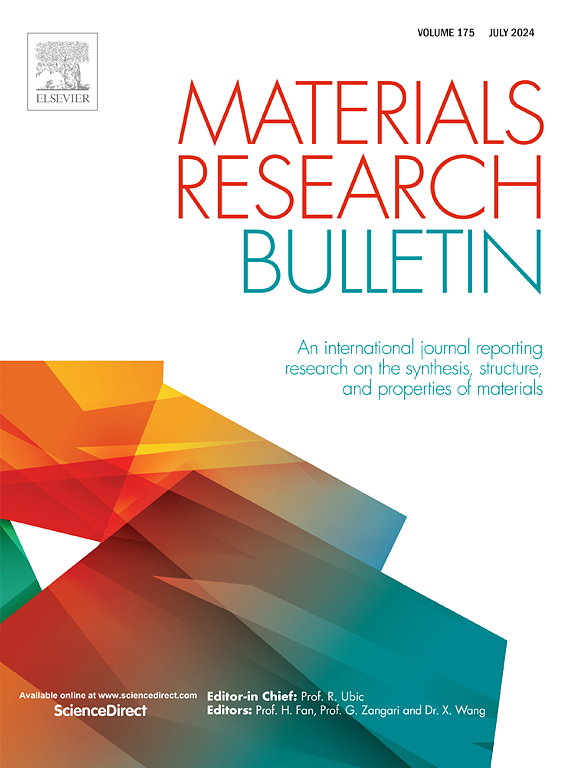Microstructure and properties of thin AlN coatings with different stoichiometric compositions
IF 5.3
3区 材料科学
Q2 MATERIALS SCIENCE, MULTIDISCIPLINARY
引用次数: 0
Abstract
The influence of the stoichiometric composition of thin AlN coatings on its microstructure, properties and specific electrical resistivity was studied. It was established that a sharp change occurs in the microstructure and properties when the nitrogen concentration in the coatings varies from 15 to 20 at.% N due to the changes in the phase composition of coatings. High mechanical properties (elastic modulus E and microhardness H) were obtained on Al0.87N0.13 coating (E = 65 GPa, H = 1.1 GPa, group 1, at sputtering temperature 100 °C) and Al0.86N0.14 coating (E = 65 GPa, H = 1.2 GPa, group 2, at sputtering temperature 20 °C). Low microtribological properties were obtained: in group 1 on an Al0.87N0.13 coating and in group 2 – Al0.83N0.17 coating. From the point of view of the optimal combination of microstructure and properties the most preferred AlN coatings for use in microelectronics are: from group 1 – Al0.87N0.13 coating (ρ=0.168 μΩ·m), from group 2 – Al0.83N0.17 coating (ρ=0.918 μΩ·m).

求助全文
约1分钟内获得全文
求助全文
来源期刊

Materials Research Bulletin
工程技术-材料科学:综合
CiteScore
9.80
自引率
5.60%
发文量
372
审稿时长
42 days
期刊介绍:
Materials Research Bulletin is an international journal reporting high-impact research on processing-structure-property relationships in functional materials and nanomaterials with interesting electronic, magnetic, optical, thermal, mechanical or catalytic properties. Papers purely on thermodynamics or theoretical calculations (e.g., density functional theory) do not fall within the scope of the journal unless they also demonstrate a clear link to physical properties. Topics covered include functional materials (e.g., dielectrics, pyroelectrics, piezoelectrics, ferroelectrics, relaxors, thermoelectrics, etc.); electrochemistry and solid-state ionics (e.g., photovoltaics, batteries, sensors, and fuel cells); nanomaterials, graphene, and nanocomposites; luminescence and photocatalysis; crystal-structure and defect-structure analysis; novel electronics; non-crystalline solids; flexible electronics; protein-material interactions; and polymeric ion-exchange membranes.
 求助内容:
求助内容: 应助结果提醒方式:
应助结果提醒方式:


